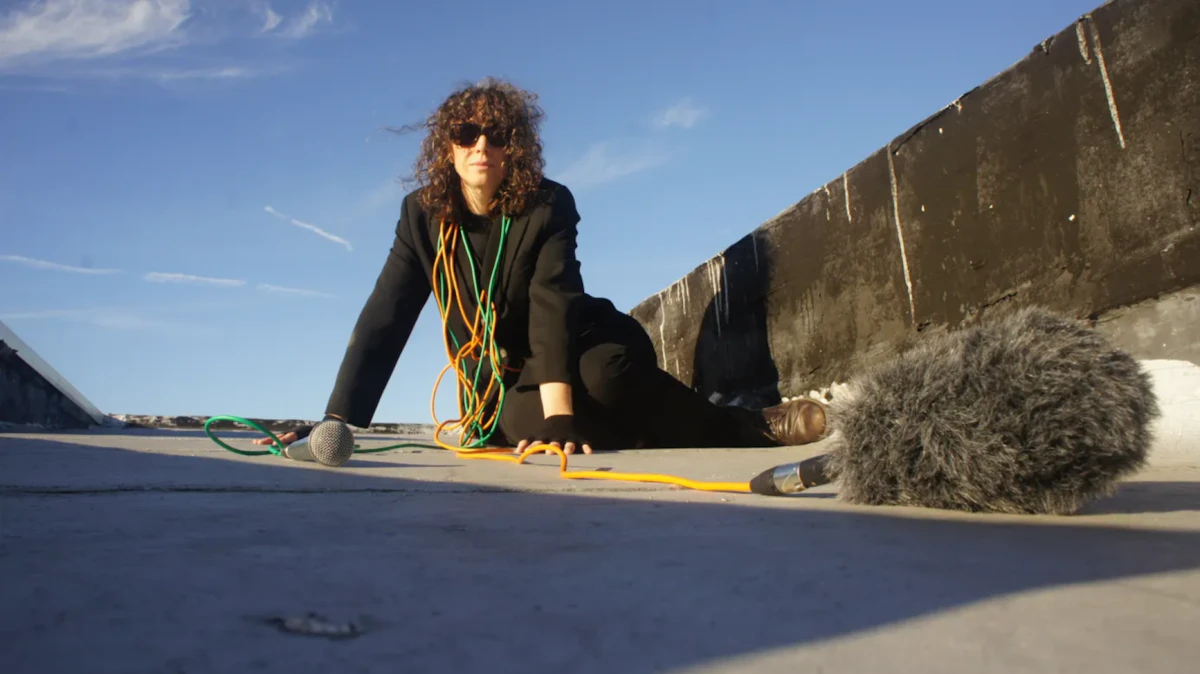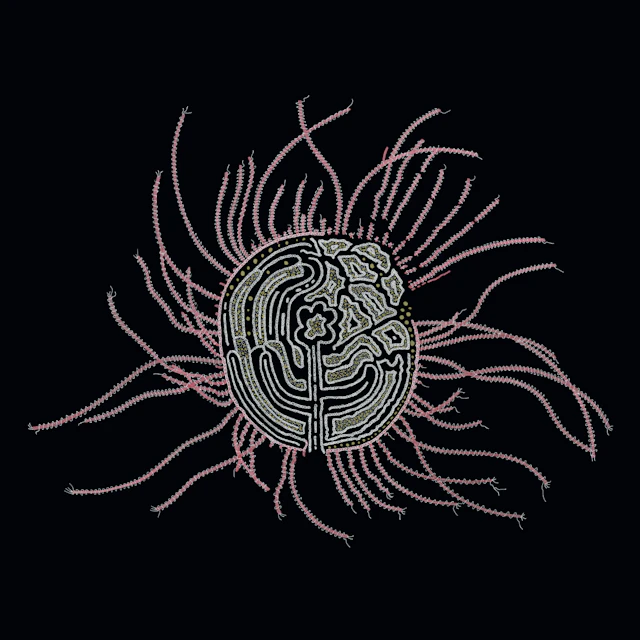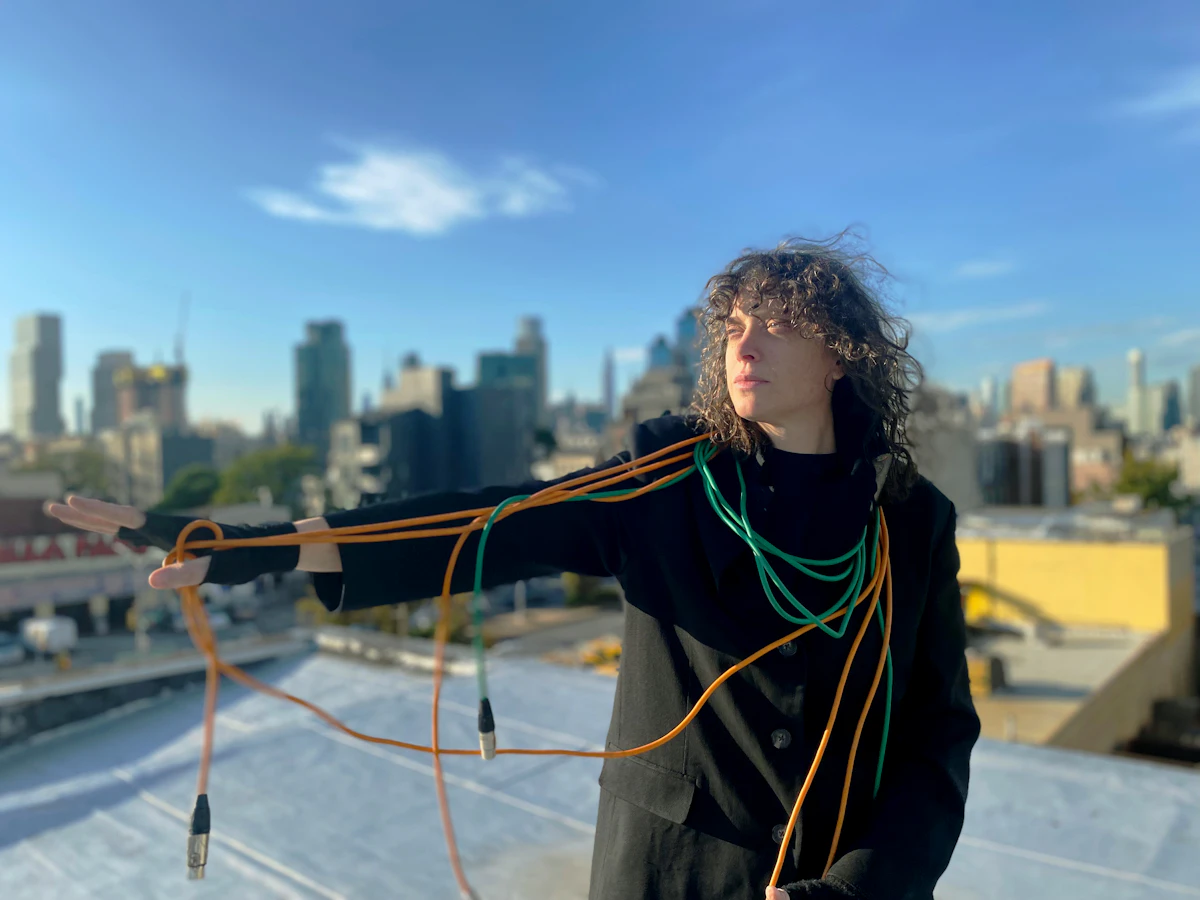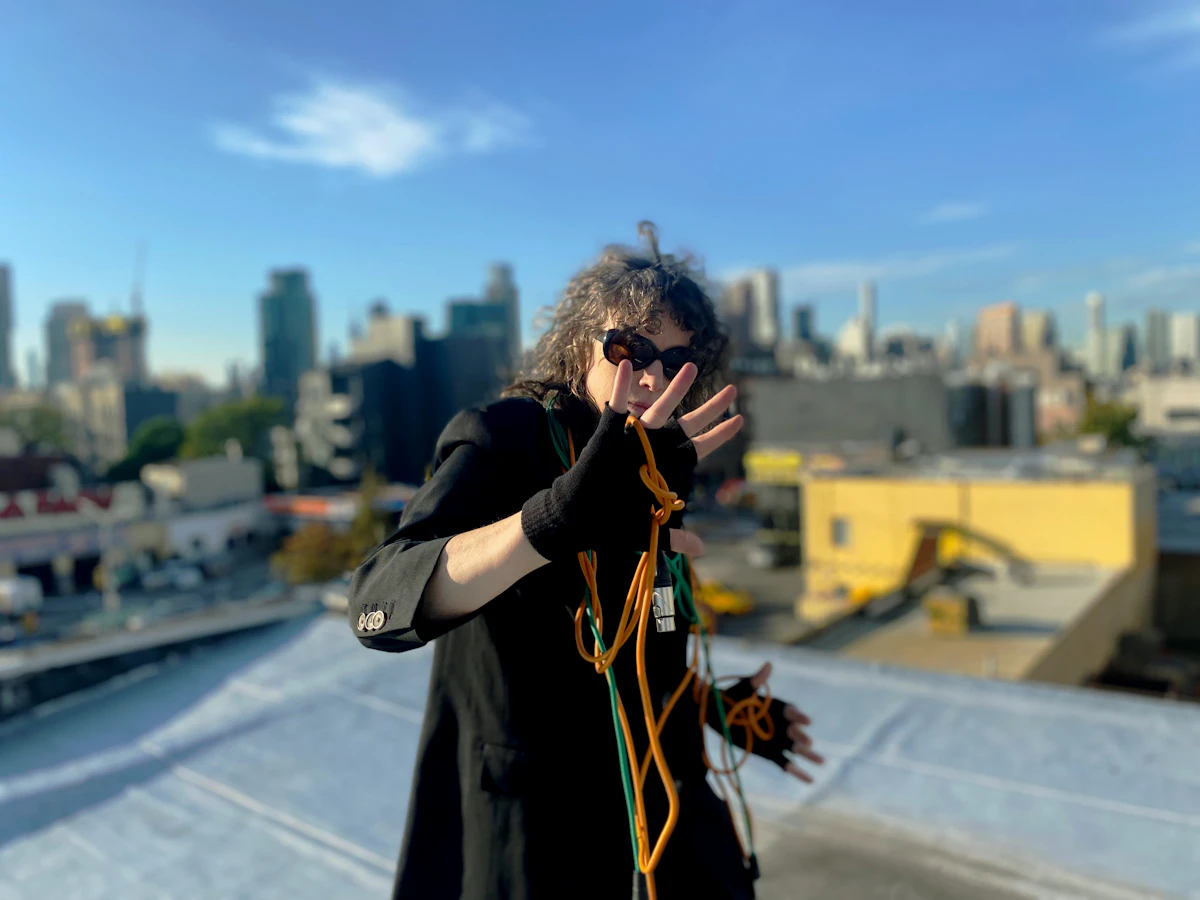How do you approach live performance?
The difference between a recording and a live performance has become quite distinct for me, as opposed to say a recording strictly being a document of the live performance. In the last several years, my live performance has really become almost everything to me. It is such a direct and profound exchange in a world that is overly saturated. I have become strictly interested in presenting sound and sound design through an embodied, theatrical, ritualistic context. Using pre-recorded acousmatic samples on the loudspeakers and automated chains of effects on my microphones, the loudspeakers and microphones become like entities in and of themselves apart from me that I react to and am triggered by.
In support of Bearings specifically, my live performance can be thought of as this search for a foothold in what seems a groundless environment. In other words, we are always in a bardo because impermanence never takes a break. It is a sonic exploration, both intense and playful, of the survival strategies we use in times of crisis, i.e. the sympathetic nervous system, the system that prepares the body for strenuous physical activity in times of danger. The piece then is juxtaposed with brief moments where it releases and surrenders, giving way to the parasympathetic nervous system, the system that supports rest and relaxation.
Who are some performers that influenced you early on? How about right now?
My current nutshell list of sonic and performative influences now and then include:
-Pierre Schaeffer and his notions of musique concrete and later acousmatic music
-Minimalisms and microtones of Phill Niblock, Tony Conrad, Eliane Radigue
-Pauline Oliveros' devotion to deep listening
-Electronic music pioneers Iannis Xenakis & Karlheinz Stockhausen
-Ecstatic free jazz of Alice Coltrane, Cecil Taylor, Pharoah Sanders
-Postpunk, noise, no wave and Krautrock bands such as Raincoats, Slits, DNA, CAN
-Vocal techniques of Joan La Barbara, Yoko Ono, Linda Sharrock
-Folkways/Ocora recordings of musics around the world especially Burundi and the Cameroon
-Butoh & contemporary dance practices, beatboxing, martial arts, slapstick comedy and sports
Header photo by Samantha Riott. All other photos by Camilla Padgitt-Coles



